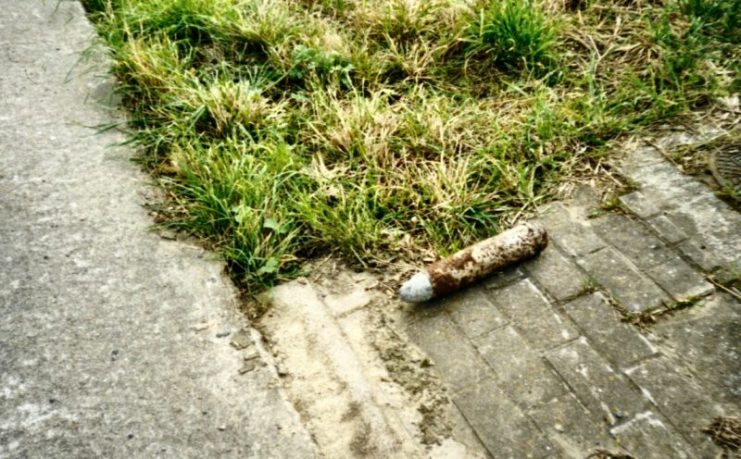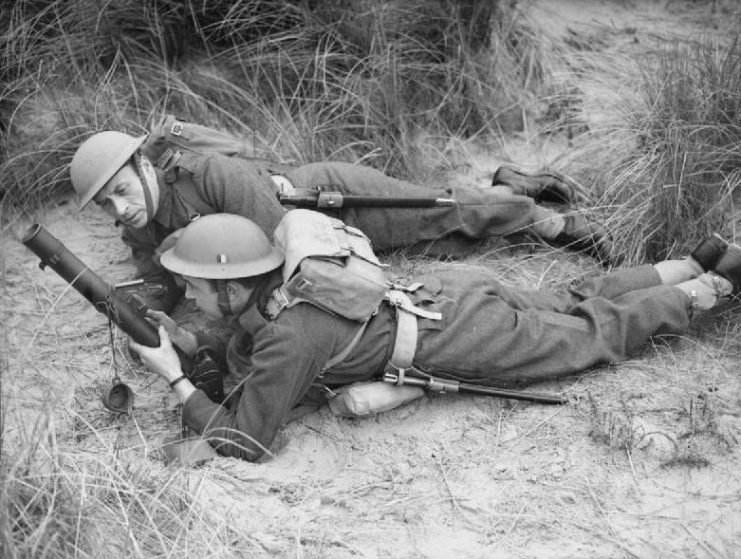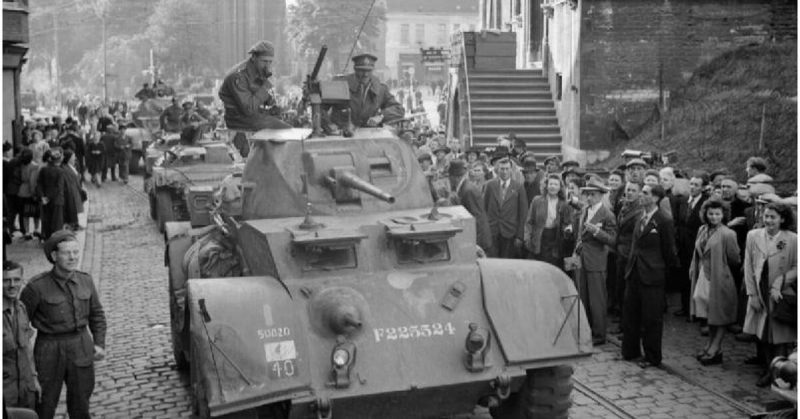Of the millions of bombs that fell in Western Europe during World War I many still lie quietly underground rusting away until someone finds them. Usually, a farmer plowing his fields to ready them for planting finds them although some have been found in more populated areas. If one is found people often move them around, keep them in their homes as conversation pieces or even sell them – just asking for trouble.
It’s very difficult for the average person to determine if a bomb was just a dud that never exploded or if it still has the capacity to detonate with no warning. Just moving it can be fatal. Not only is there the danger of an explosion but if the bomb had been holding chemicals or was near a damaged chemical bomb it could easily have become contaminated while lying in the same soil for one hundred years. In Belgium, the location of some of the harshest fighting, a group of men recover these newly discovered explosives for a living.
Since 1919, DOVO, located in Ypres, has been tasked with recovering and safely disposing of the nearly two hundred tons of abandoned munitions found every year. DOVO personnel risk their lives on a daily basis collecting forgotten explosives and taking them to a safe area for detonation. The bombs are usually packed in boxes filled with sand to avoid an accidental explosion. Even with all precautions put in place, twenty men have been killed since the organization’s inception, mostly during transport.
In the autumn of 2016, a new state of the art facility was opened for DOVO which allows them to detonate explosives in a safer and more controlled manner with a specially designed decontamination plant. Designed and built by Franki Construct it was constructed in Sweden and moved to Belgium.

About fifteen years ago a World War I mine was discovered on a farm in Flanders. Researchers were aware of its existence as it had been included in a line of more than one million pounds of explosives buried by the British under the Messines Ridge below the German trenches in 1917. When the line was exploded, every structure within a distance of thirty miles was damaged, and Switzerland’s seismic detection equipment registered a small earthquake in progress. The problem is that six devices did not detonate. One of the largest, at about 50,000 pounds is still about eighty feet under the barn at the Flanders farm. Farmers along what was called the Western Front in Northern France and Belgium are accustomed to finding war munitions and debris in their fields, and the owner didn’t seem to be overly concerned.
The mines, shells, fuses, mortars, grenades and bullets range from a few inches long to almost six feet tall with the capacity to blow up an entire city block. They were given nicknames by the troops, calling them moaning minnies, whizz-bangs and toffee apples. Some of the missiles contained vials inside filled with chemicals such as mustard gas and chlorine gas. While mustard gas did not immediately kill, it incapacitated soldiers enough for the killing chemicals to be launched. The gas burns the skin and destroys the mucus membranes of the eyes, throats and lungs.

The soldiers exposed to mustard gas often recovered, but due to damage of the victims’ DNA, they and their descendants have a high risk factor for cancer. This writer’s grandfather, a member of the 42nd Infantry Division, the “Rainbow Division”, was unable to get his gas mask on quickly enough and was exposed to a mustard gas bomb in 1918 while fighting in France. He later recovered, but two of his children died in their fifties from leukemia.
Although at the start of the war Belgium was considered neutral but being centrally located in Europe it was subject to intensive bombing early in the war as the Germans sought to cut through in their efforts to occupy Paris. In the first three months of the war about 6,000 Belgian civilians were killed, 25,000 homes and buildings in more than 800 communities had been destroyed, and the cities of Liège and Namur had been occupied. When the Germans overran the city of Leuven, they destroyed over 2,000 buildings including a library of 300,000 irreplaceable books and manuscripts from medieval times.
